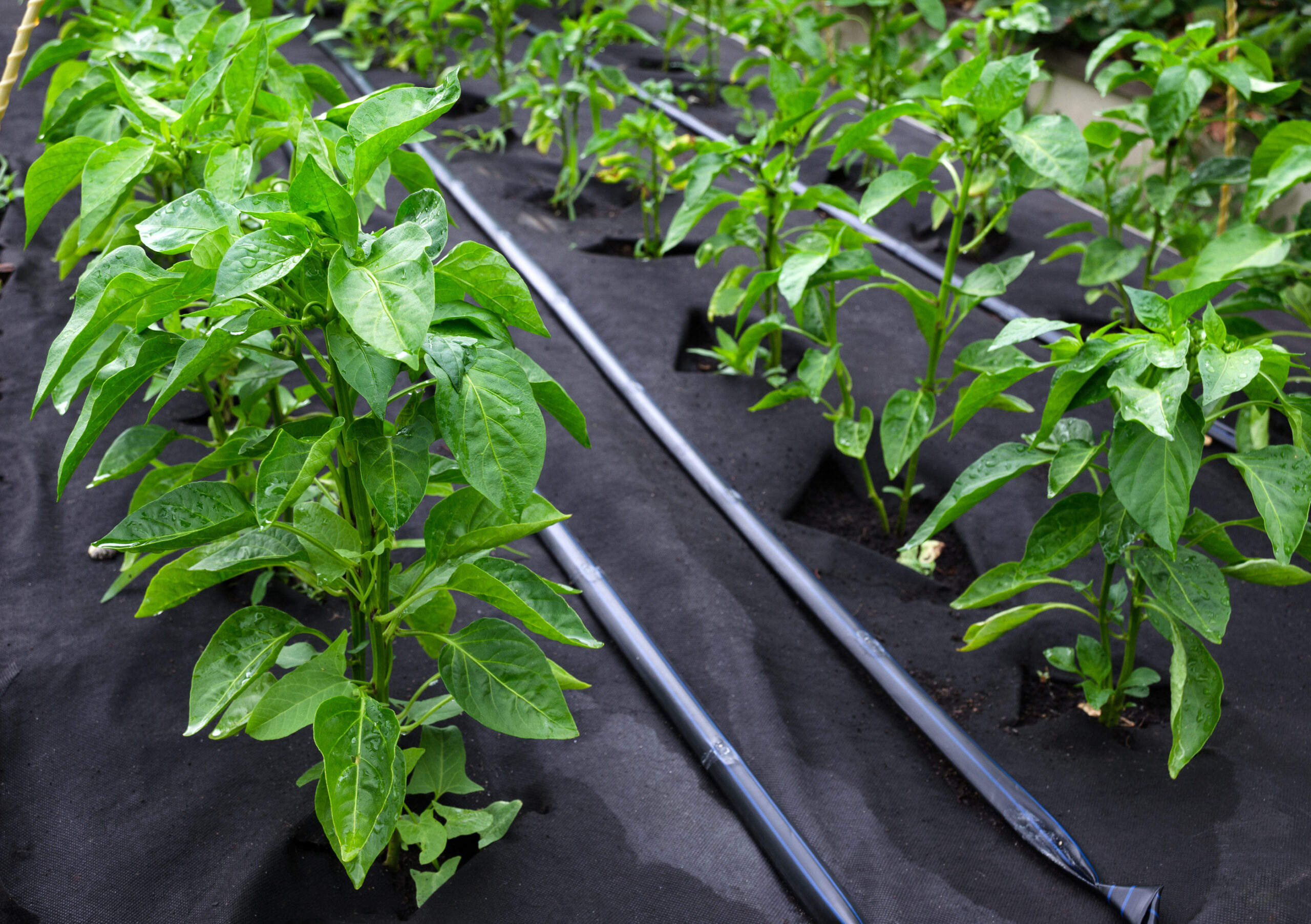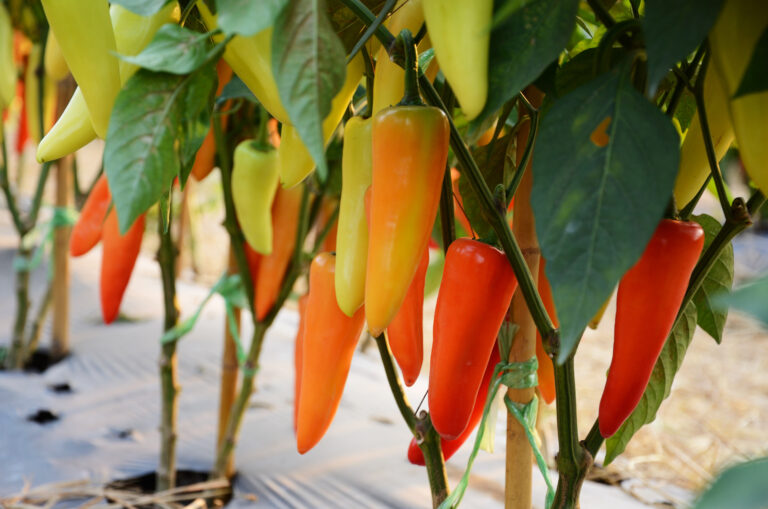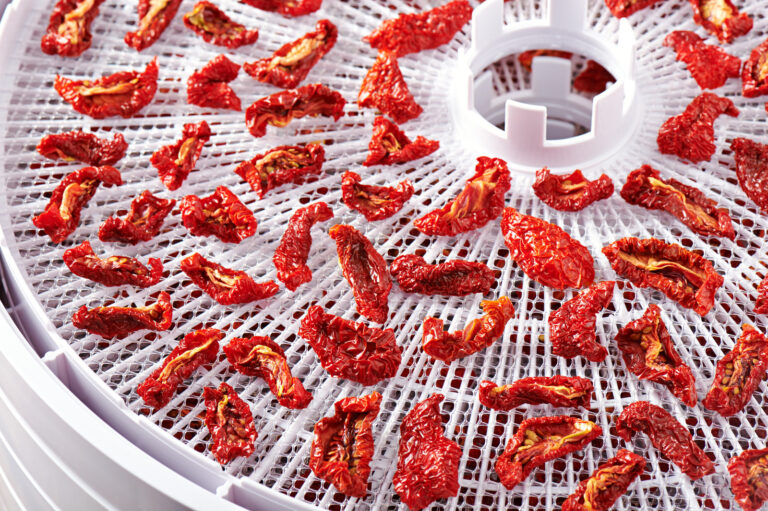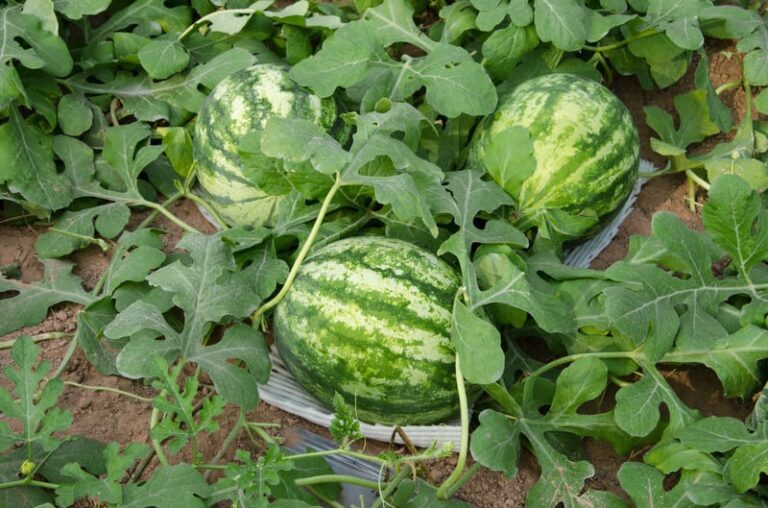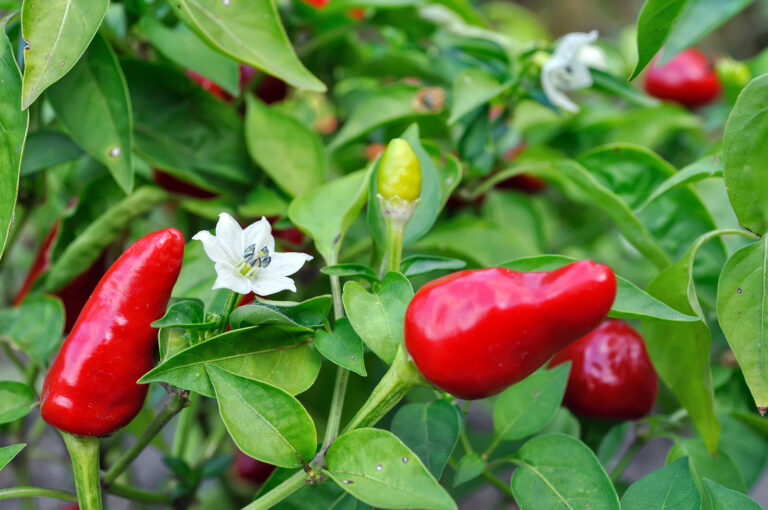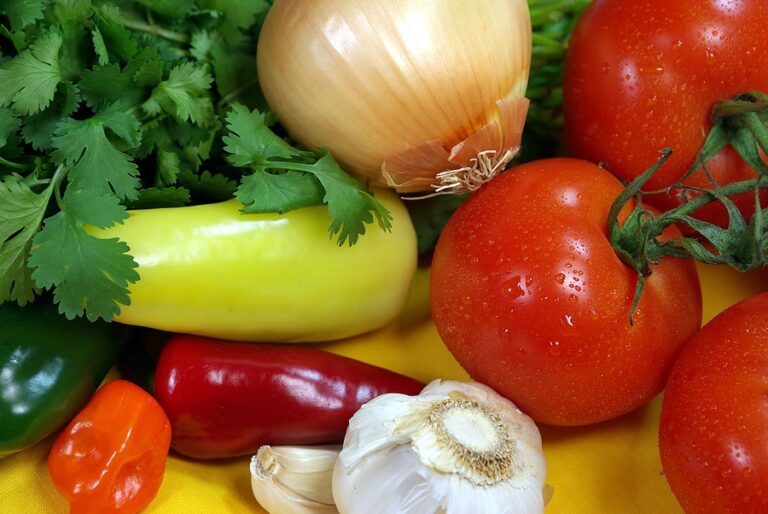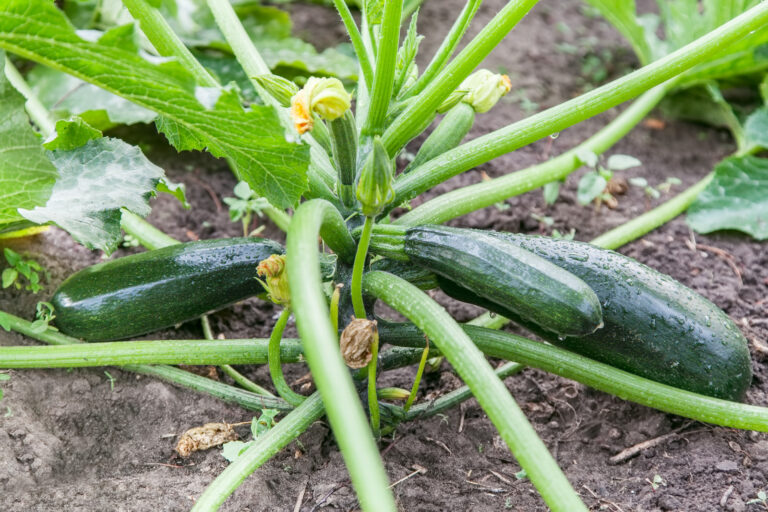How to Water & Fertilize Sweet Bell Peppers for Maximum Yield
Through years of growing bell peppers in different conditions—raised beds, containers, and traditional garden rows—I’ve learned that proper watering and fertilizing make all the difference between a mediocre harvest and an abundant one. Early on, I struggled with issues like blossom end rot, slow growth, and low yields, but after experimenting with different watering schedules and fertilizer combinations, I found a system that consistently produces strong, healthy plants loaded with peppers.
In this guide, I’ll share the methods I use to keep bell peppers well-hydrated and properly nourished from seedling to harvest. Whether you’re growing a few plants in your backyard or tending to a large garden, the right balance of water and nutrients will set you up for success. Let’s dive into the best practices to maximize your pepper yield!
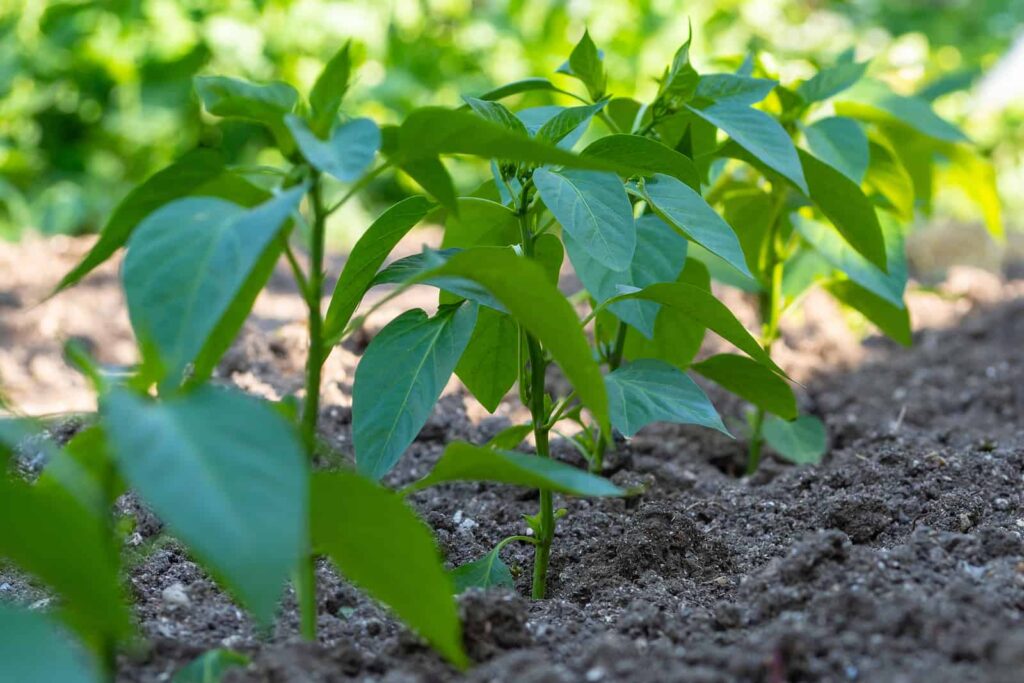
Watering Peppers
Water peppers deeply to encourage deep-root development. Too little water can result in bitter-tasting peppers. Peppers want even, moderate moisture around their roots. A gallon of water–about an inch–per plant once or twice a week applied slowly so that the moisture seeps to the roots is best. Avoid overhead watering especially when peppers are in bloom, overhead water will wash away pollen and any chance of fruiting. Be careful not to overwater’ overwatering will cut off the supply of oxygen to pepper roots.
Keep the soil evenly moist, not too wet, and not too dry. A deep watering once a week will equal about 1 inch of rainfall. The critical time for watering is from flowering through harvest. Water stress can cause buds and blossoms to drop (so can cold temperatures).
- Keep peppers evenly moist but not wet particularly when blossoms appear and fruit begins to form.
- Soil that goes too dry can result in flower drop
Fertilizing Peppers
Feed peppers with manure or compost tea. Pale leaves and slow growth are signs your peppers need a boost. Peppers are heavy feeders so a side-dressing of manure or compost tea a few times during the growing season is a plus. Steep a sockful (an old gym sock will do) of compost or manure in a pail of water until the water turns the color of tea. Feed the plants by watering them at the base of the stem. If brewing a manure tea is out of the question, side-dress with a teaspoon of commercial fertilizer, 5-10-10 sprinkled around the plant’s drip line, and scratched gently into the soil. The first side-dressing should come at blossom time, about a month after transplanting to the garden. Add a second side-dressing about a month after flowering when the first fruits have developed.
Peppers use nitrogen for sturdy stems and foliage, phosphorus for fruit production, and potassium for strong roots. About 12 weeks after transplanting or when blossoming starts, peppers will need additional nutrients (remember you fed them in the planting hole at transplant time—see above). At blossom time, pull back the mulch and side-dress plants with a sprinkling of 5-10-10 organic fertilizer and a half-handful of bonemeal around the drip line. Carefully turn the fertilizer into the soil. Repeat this feeding when fruits are about 1 inch long.
Peppers produce a lot of flowers but few fruits need a shot of magnesium. Spray your plants with a solution of Epsom salts when blossoming begins. Mix 2 teaspoons of Epsom salts in a quart of warm water and spray it on the leaves and blossoms; repeat every 2 weeks.
- Add aged compost to planting beds before planting and again at midseason. Aged compost will feed the soil and act as a mulch to stem soil moisture evaporation.
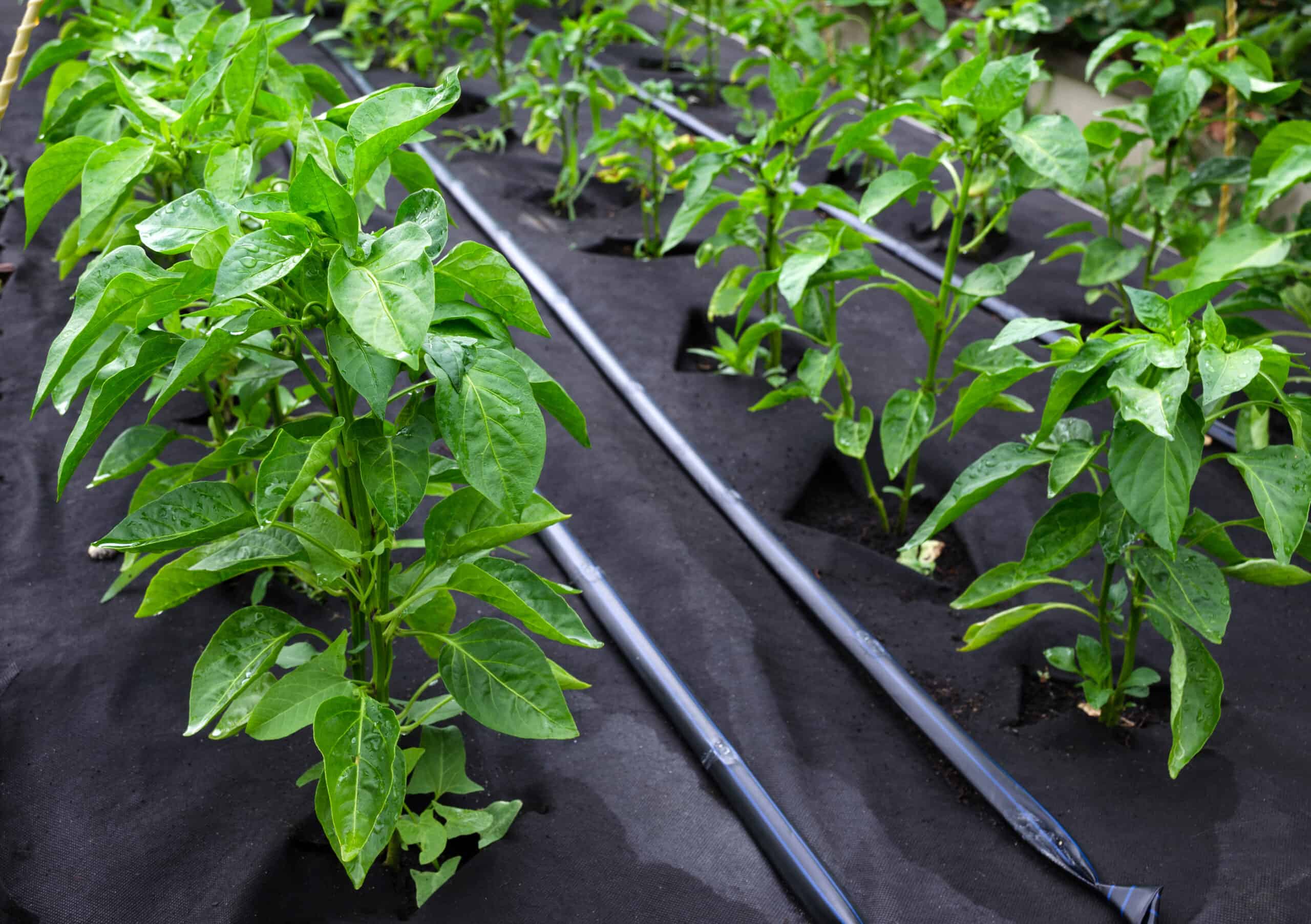
Pepper Care Throughout the Season
Early in the season protect young plants from cold and pest insects by covering the growing bed with a floating row cover. When the peppers begin to blossom, remove the cover so that bees and other insects can pollinate the plants. (You can also cover young plants with cloches or plastic milk jugs.)
Once soil and nighttime temperatures have warmed and summer heat comes, mulch around pepper plants with a finely-shredded organic mulch such as a mixture of grass clippings and straw. Mulch will retain soil moisture and keep the humidity high around plants (remember, peppers are tropical plants and love humidity). Place the mulch at least an inch or two from the stem and as much as 6 inches deep out to the drip line.
Stake or cage peppers heavy with fruit (it’s easier to set the cage or stake at planting time). Peppers have brittle stems and branches. Use elastic plastic tape to tie plants to stakes.
Temperatures greater than 90°F can cause buds and blossoms to drop, particularly when the air is dry. Where summers are very hot put shade-cloth frames in place to protect peppers or plant on the north side of taller plants such as tomatoes or corn that can offer shade.
Early in the season pick the first blossoms or set of fruits to encourage the plant to keep bearing and grow larger fruits later in the season.
- Keep planting beds well-weeded to avoid competition.
- Peppers are shallow-rooted, so cultivate around peppers with care.
- Mulch around peppers with aged compost or straw to keep soil temperature and moisture even.
- Plastic mulch can improve pepper yields. Organic compost mulches will reduce weeding and watering, but not fruit yields.
- Avoid high nitrogen fertilizers which will create large leafy plants with few or no fruits.
- Feed plants compost tea or water with a dilute fish emulsion solution every 10 days.
- Support pepper plants with a stake or cage; plants heavy with fruit can break or topple. Pepper branches are brittle and can easily break.
- High temperatures and wind can cause flowers to drop and plants not to set fruit.
Mulching peppers
Mulching peppers with straw or grass clippings around plants. A thick mulch will stop weeds from growing and keep moisture in the soil when the weather gets hot. Use hay, straw, leaves, or grass clippings to mulch peppers. Organic mulches decompose and feed the soil and earthworms below. Make sure that the mulch you put down does not contain flowers or seeds; no sense in encouraging weed growth this season or next. If you put down a black plastic mulch to warm the soil early on, you can lift that once the soil has warmed and use the organic mulch in its place.
Weeding peppers
Keep weeds away from peppers. Weeds compete with peppers and other crops for the same space, water, and nutrients. Regular weeding will keep weeds from getting a foothold in the garden. Avoid damaging roots by gently hand-pulling weeds. Most young weed roots will not reach more than an inch deep into the soil. Avoid deep cultivation which can harm crop roots.
🌶 Peppers Growing Hub
Start here:
- How to Plant and Grow Hot Peppers: A Gardener’s Guide to Spicy Success
- How to Grow Sweet Peppers: A Gardener’s Guide to a Bountiful Harvest
Getting Peppers Started (general prep)
- Seed Starting Peppers: Proven Method for Strong, Healthy Plants
- Soil Preparation for Peppers: The Secret to Strong Roots and Big Harvests
- Best Hot Pepper Varieties to Grow for Salsas, Sauces, and Drying
- Best Sweet Pepper Varieties to Grow
- World’s Hottest Peppers You Can Grow in Your Garden
- The Science of Pepper Heat: Understanding Scoville Units
- Growing Peppers Indoors Under Lights
- Companion Planting with Peppers: Best and Worst Neighbors in the Garden
Planting & Growing Peppers
- When and How to Transplant Pepper Seedlings Outdoors
- 10 Steps to Grow a Bumper Pepper Crops
- How to Grow Hot Peppers in Containers: Tips for Small Spaces
- 7 Tips for Growing Peppers in Pots
- How to Grow Colored Bell Peppers: How to Get Reds, Yellows, and Oranges
- Cross-Breeding Hot Peppers at Home: A Beginner’s Guide
- How to Water & Fertilize Sweet Bell Peppers for Maximum Yield
- Pruning Pepper Plants for Healthier Growth and Bigger Harvests
- Six Tips to Grow Peppers for Flavor
- Pepper Season Extension & Overwintering: How to Keep Plants Producing Longer
Pepper Care & Troubleshooting
- Pepper Pests, Diseases, and Problems—How to Fix Them Naturally
- Caring for Peppers: Mid-Season Problem Cures
- How to Increase the Heat of Hot Peppers Naturally
- Overwintering Pepper Plants Indoors
- How to Overwinter Pepper Plants in Any USDA Zone
Harvesting & Preserving Peppers
- When to Harvest Hot Peppers for Maximum Heat
- How to Harvest Sweet Peppers for the Best Flavor
- How to Preserve Hot Peppers: Drying, Fermenting & Pickling
- How to Ripen Green Peppers Indoors
- Saving Pepper Seeds for Next Year’s Crop
Cooking & Using Peppers
- Preparing and Serving Sweet Peppers – Harvest to Table
- Five Ways to Cook and Serve Chili Peppers
- Stuffed Peppers: Best Varieties for Cooking
- Cooking with Hot Peppers: Flavor & Safety Tips
- How to Handle Hot Peppers Without Burning Your Skin
Books to help you grow:

